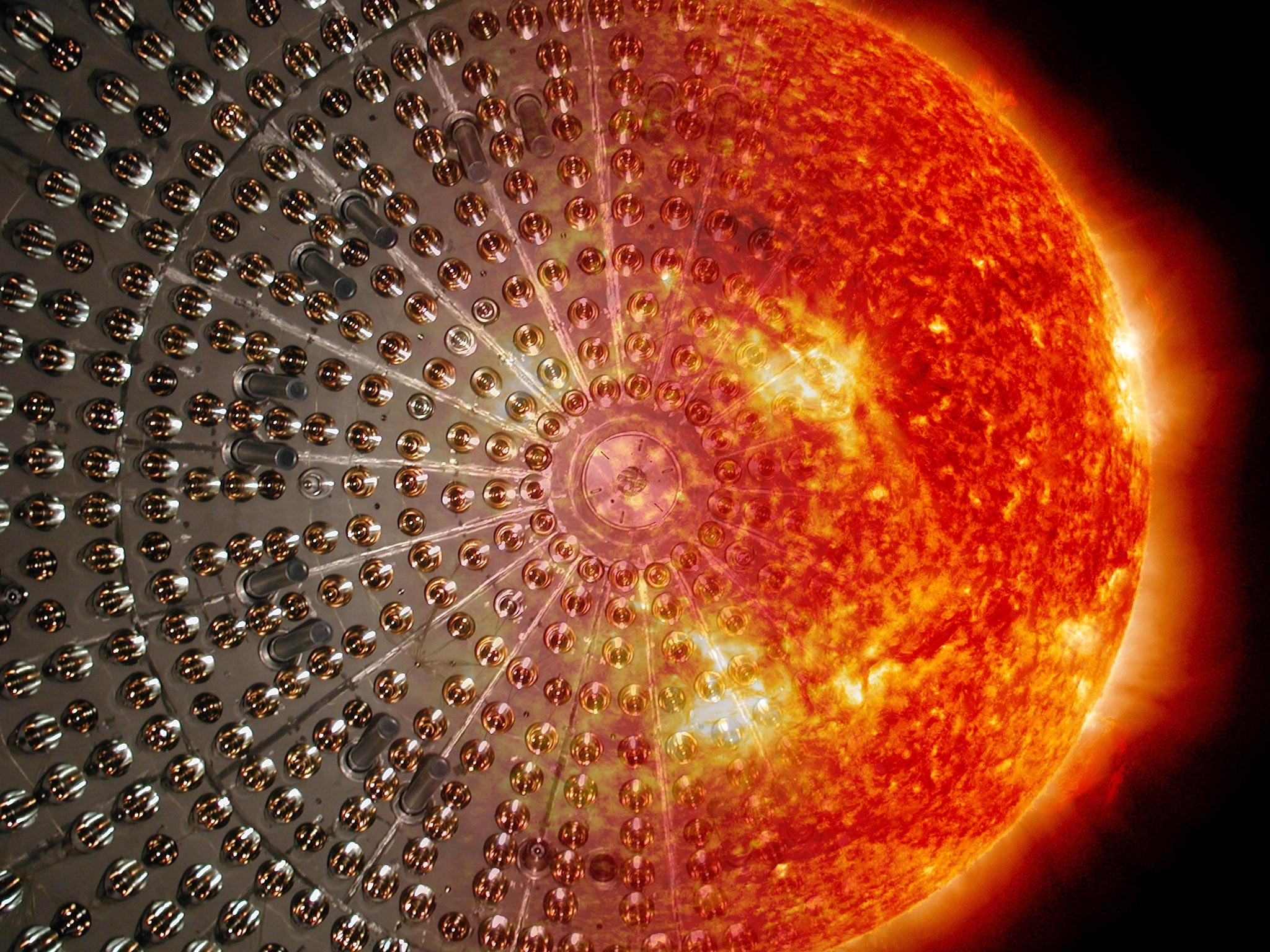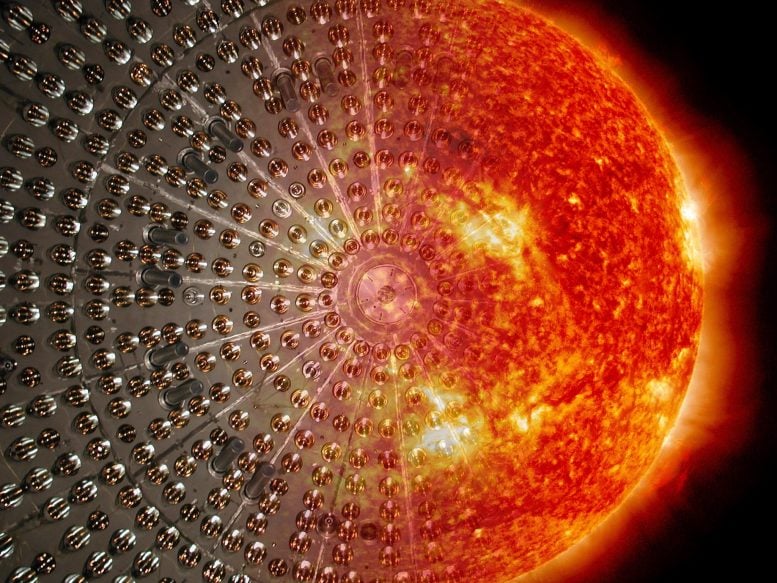
[ad_1]

The Borexino detector in combination with the sun. Credit: Copyright Borexino Collaboration / Maxim Gromov
The Borexino collaboration, in which scientists from TU Dresden are also participating, has succeeded, after more than 80 years, in confirming the Bethe-Weizsäcker cycle experimentally.
Stars produce their energy through nuclear fusion by converting hydrogen into helium – a process known to researchers as “hydrogen combustion”. There are two ways of carrying out this fusion reaction: on the one hand, the so-called pp cycle (proton-proton reaction) and the Bethe Weizsäcker cycle (also called the CNO cycle, derived from the elements carbon (C), nitrogen ( N) and oxygen (O)) on the other hand.
The pp cycle is the predominant energy source in our Sun, only about 1.6 per mil of its energy comes from the CNO cycle. However, the Standard Solar Model (SSM) predicts that the CNO cycle is probably the predominant reaction in much larger stars. As early as the 1930s, the cycle was theoretically predicted by physicists Hans Bethe and Carl Friedrich von Weizsäcker, then named after these two gentlemen. While the pp cycle could already be proved experimentally in 1992 during the GALLEX experiment, also in the Gran Sasso massif, the experimental proof of the CNO cycle has so far not been successful.
The pp cycle and the CNO cycle produce countless neutrinos – very light elementary particles that are electrically neutral. The fact that neutrinos hardly interact with other matter allows them to leave the interior of the sun at almost the speed of light and to carry information about their origin unimpeded to Earth. Here, the ghost particles just have to be captured. This is a fairly complex undertaking, which is only possible in a few large-scale experiments around the world, as neutrinos appear as small flashes of light in a huge reservoir filled with a mixture of water. , mineral oil and other substances, also called scintillator. . Evaluating measured data is complex and resembles finding a needle in a haystack.
Compared to all previous and ongoing experiments on solar neutrinos, Borexino is the first and only experiment in the world capable of measuring these different components individually, in real time and with high statistical power. This week, the Borexino research collaboration was able to announce a great success: in the renowned scientific journal Nature, they present their results on the first experimental detection of CNO neutrinos – an important step in neutrino research.
The Dresden physicist Professor Kai Zuber is an avid neutrino hunter.
He is involved in many different experiments around the world, such as the SNO collaboration in Canada, which received the Nobel Prize for its discovery of a mass of neutrinos. The fact that with Borexino, he and his colleagues Dr. Mikko Meyer and Jan Thurn have now succeeded in experimentally proving CNO neutrinos for the first time is another major milestone in Zuber’s scientific career: “I actually have now achieved everything I had imagined and hoped for. I (almost) don’t believe in the big new discoveries in solar neutrino research for the rest of my life. However, I would like to continue working on the optimization of experiments, in which the Felsenkeller accelerator here in Dresden plays an extremely important role. We will certainly be able to have even more precise measurements of the Sun in the future. “
Read the first experimental evidence of the neutrino performance of the universe’s CNO energy-producing mechanism to learn more about this research.
Reference: “Experimental evidence of neutrinos produced in the CNO fusion cycle in the Sun” by The Borexino Collaboration, November 25, 2020, Nature.
DOI: 10.1038 / s41586-020-2934-0
[ad_2]
Source link